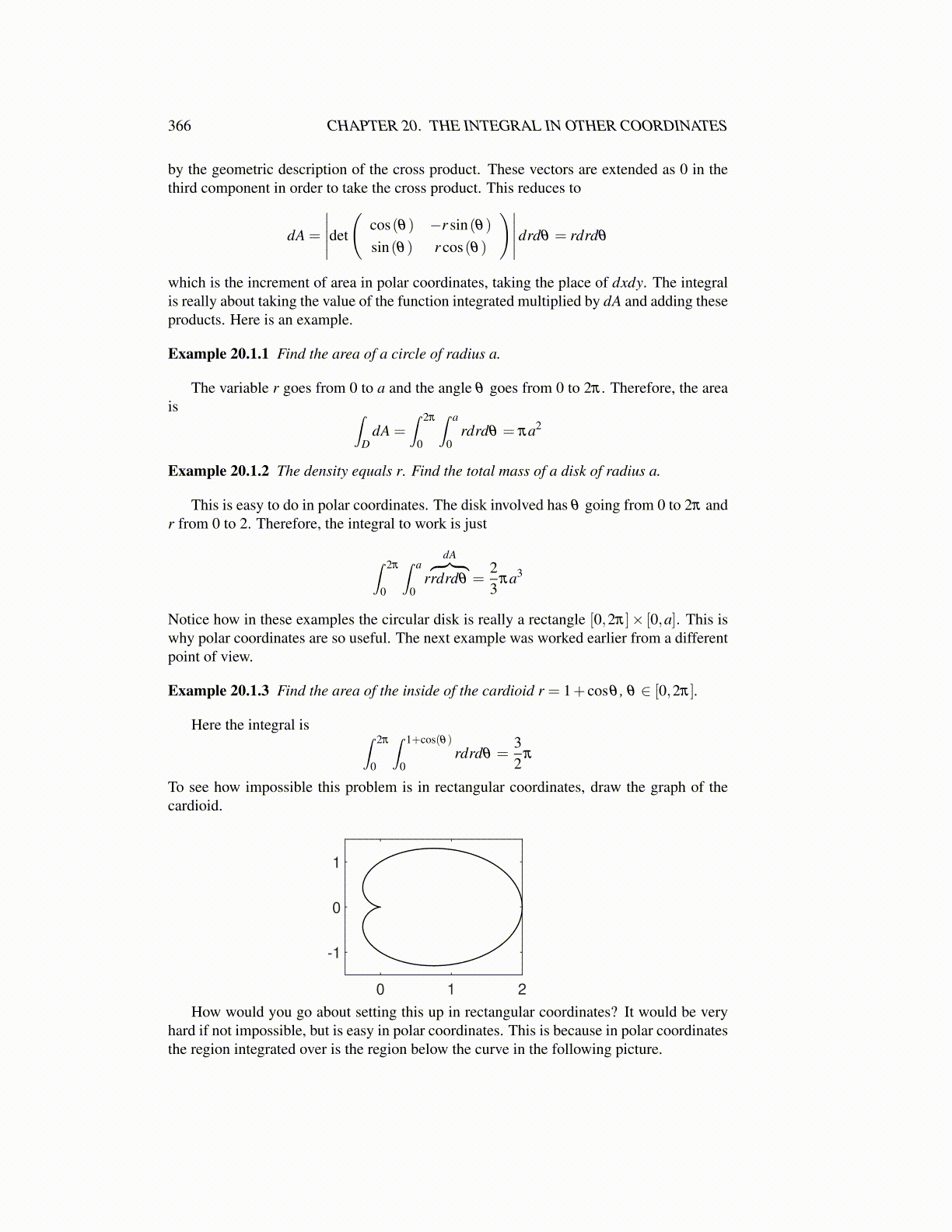
366 CHAPTER 20. THE INTEGRAL IN OTHER COORDINATES
by the geometric description of the cross product. These vectors are extended as 0 in thethird component in order to take the cross product. This reduces to
dA =
∣∣∣∣∣det
(cos(θ) −r sin(θ)sin(θ) r cos(θ)
)∣∣∣∣∣drdθ = rdrdθ
which is the increment of area in polar coordinates, taking the place of dxdy. The integralis really about taking the value of the function integrated multiplied by dA and adding theseproducts. Here is an example.
Example 20.1.1 Find the area of a circle of radius a.
The variable r goes from 0 to a and the angle θ goes from 0 to 2π . Therefore, the areais ∫
DdA =
∫ 2π
0
∫ a
0rdrdθ = πa2
Example 20.1.2 The density equals r. Find the total mass of a disk of radius a.
This is easy to do in polar coordinates. The disk involved has θ going from 0 to 2π andr from 0 to 2. Therefore, the integral to work is just
∫ 2π
0
∫ a
0r
dA︷ ︸︸ ︷rdrdθ =
23
πa3
Notice how in these examples the circular disk is really a rectangle [0,2π]× [0,a]. This iswhy polar coordinates are so useful. The next example was worked earlier from a differentpoint of view.
Example 20.1.3 Find the area of the inside of the cardioid r = 1+ cosθ , θ ∈ [0,2π].
Here the integral is ∫ 2π
0
∫ 1+cos(θ)
0rdrdθ =
32
π
To see how impossible this problem is in rectangular coordinates, draw the graph of thecardioid.
0 1 2
-1
0
1
How would you go about setting this up in rectangular coordinates? It would be veryhard if not impossible, but is easy in polar coordinates. This is because in polar coordinatesthe region integrated over is the region below the curve in the following picture.